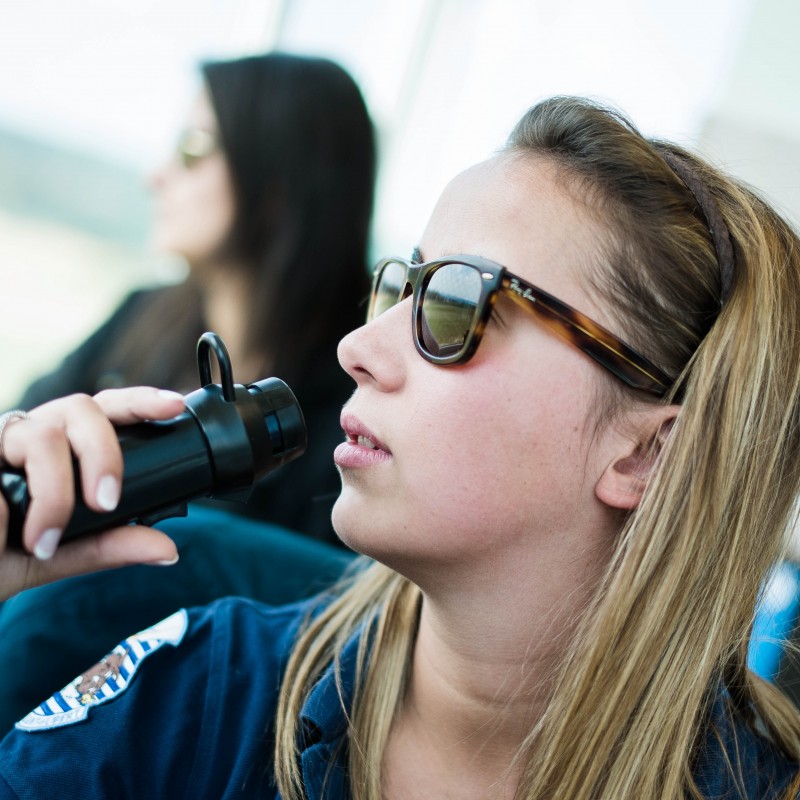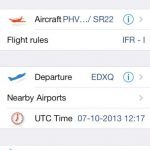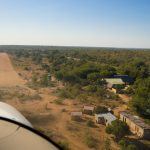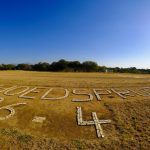Planning a flying trip to any remote place on earth can be a complicated matter due to the fact that your aircraft most likely will not remain airborne unless you feed it regularly with fuel. Most commercial aircraft fly on Jet fuel (Jet-A1), while a lot of small General Aviation (GA) aircraft engines run only on AVGAS. And some remote airfields do not offer you any fuel, making the planning even more complicated.
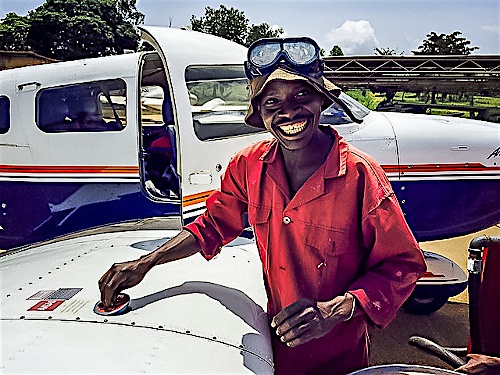
Taking on some MOGAS fuel in West Africa in Congo-Brazzaville. No AVGAS was available.
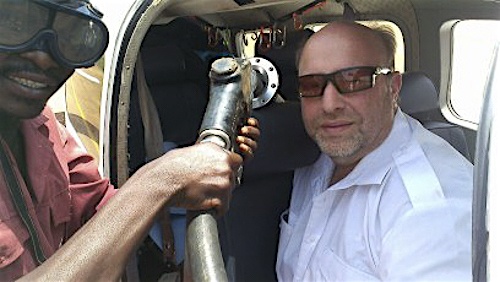
Filling up the Turtle-pac ferry-tank inside the aircraft cabin.
AVGAS, which stands for aviation gasoline, is an aviation fuel used primarily in GA aircraft to propel the aircraft. AVGAS is distinguished from MOGAS (= motor gasoline), which is the everyday gasoline used in motor vehicles as well as in some light aircraft. AVGAS still contains tetraethyl lead (TEL), a toxic substance used to prevent engine knocking or also called detonation. Some aircraft engines can take only AVGAS, while others can fly on either AVGAS or MOGAS. Petersen Aviation offers a special MOGAS Conversion Kit, adding amongst others a second fuel pump to the aircraft and making it possible to legally use MOGAS as fuel instead of otherwise only AVGAS. Turbine and diesel engines are designed to use kerosene-based jet fuel (Jet-A1). Jet-A1 fuel is readily available all over the world on about all airports as all the airlines, jets and turbines fly on Jet-A1 fuel.
It becomes all the more difficult if your aircraft flies on AVGAS only and you plan to fly from e.g. Europe to South Africa straight through the African continent. As most of Africa is not the place where you would find a lot of GA aircraft flying around for fun, the fuel available at airports is mostly there to facilitate commercial or military operations. Thus, AVGAS could not be available at all, as not many commercial operators use aircraft that fly on AVGAS.
Buying Fuel by the Barrel
One option you have is to arrange for your fuel by ordering barrels of AVGAS ahead of time. One barrel contains mostly 216.5 liter of fuel per barrel, but not all barrels/drums are equal. The barrels your reserve and order(most of them coming from Total) are then hopefully there at the airport when you arrive. You cannot buy half a barrel so it is a take all or leave behind what remains deal. I know of ferry pilots that would take the extra AVGAS along with them in the cabin in special fuel jerrycans or in an approved ferry tank like the Turtle-pac.
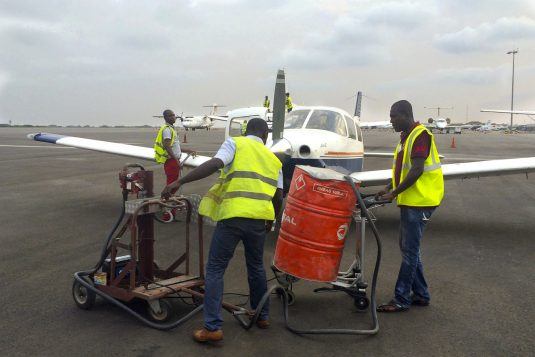
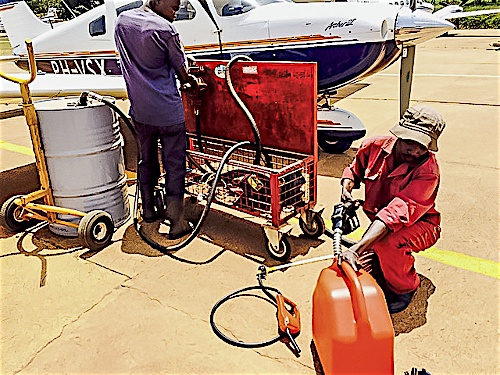
At some airports, they have their own hand-constructed or electronic way of getting the fuel pumped from the barrel into your aircraft wings. In most cases, it is better to bring along our own good quality manual fuel pump.
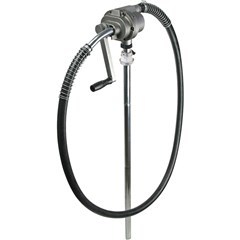
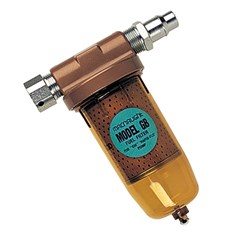
The Macnaught handpump as pictured above is great in delivering fuel to your wings from the barrel at a rate up to 60-100 liter per minute. It only takes a few minutes to hand pump the fuel from the barrel into the aircraft. Optionally, you can buy the inline fuel filter, so you would be filtering your fuel while you pump it into your aircraft wings.
Mr. Funnel produces a good quality fuel filter. The Mr. Funnel Fuel Filter is specially designed to filter out water, dirt, and debris from most fuels. We bring this fuel filter along on all our flying trips to remote areas. Especially if you are taking on regular car fuel from gas stations, it will remove dirt and water from the fuel before it goes into your aircraft fuel tank.
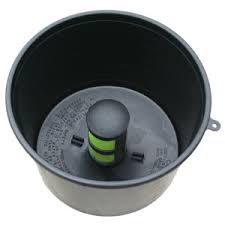
What if AVGAS is not available
We have been flying into places where we could not get AVGAS and had to rely on getting normal gasoline at the fuel pump in town. Our aircraft at the time could run on MOGAS. In one instance, I remember flying into Aden in Yemen, not being sure if and how we would get fuel to continue our trip. We ended up buying empty jerrycans on a local market and filling them up at the local fuel station. At the airport, we ran the car fuel through the fuel filter straight into our aircraft tank. The aircraft was equipped with an engine that could take on MOGAS.
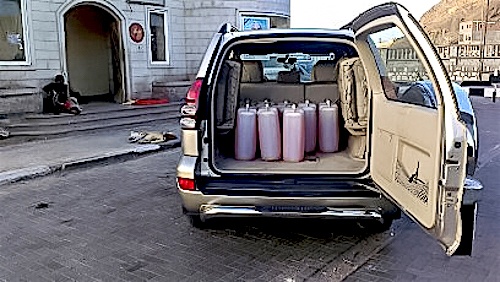
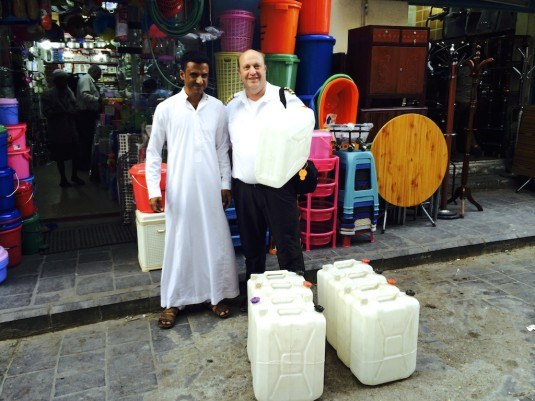
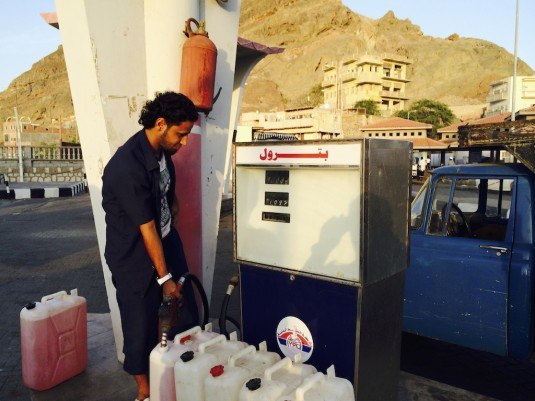
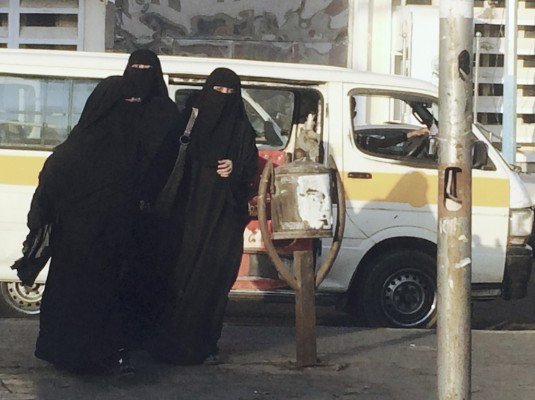
There is more that plays a role in the type of fuel you take on board. AVWEB has a good article on it here. Ethanol plays a role as well and could damage your rubber hoses or rings inside the fuel pump. Some pilots bring along an ethanol fuel test kit, while others say the damage is not going to happen if you fill up once with car gasoline while otherwise flying on AVGAS in an aircraft that is allowed to fly on MOGAS as well. Petersen Aviation runs a full page on Ethanol Testing here.
AVGAS from the Bowser or Fuel Pump
Not all places are depleted from AVGAS, even in Africa and Asia. For example, when you fly around in South Africa and some of the other African countries in that area, you will have AVGAS available on many of the airports there and delivered to you from a fixed fuel pump or a bowser coming to your aircraft. However, it is best to always be sure before you go that they did not run out of stock and to always refuel directly on arrival and not wait until you depart. You never know when they run out.
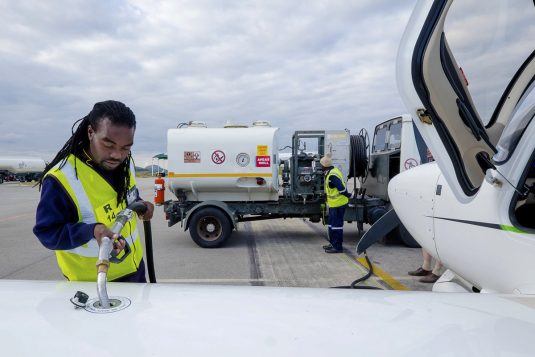
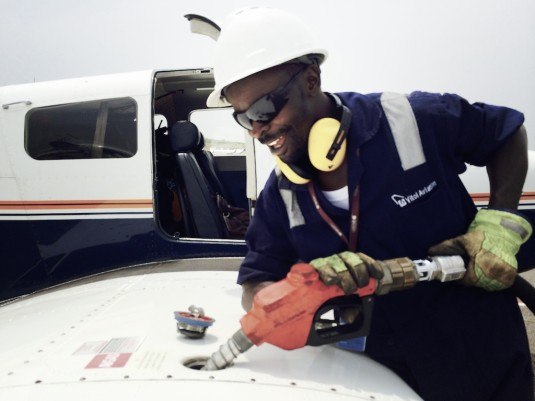
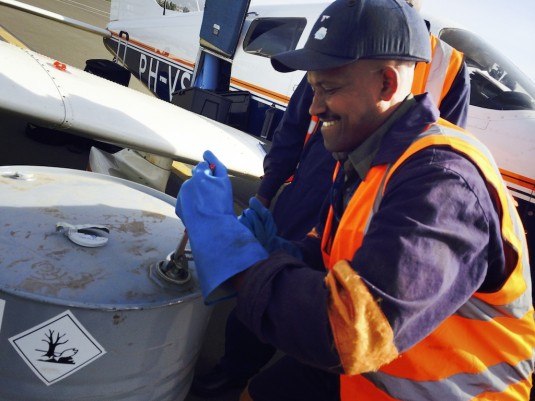
Getting fuel along the way at Kruger International Airport, Entebbe (Uganda) and the fuel barrel at Addis Ababa (Ethiopia).
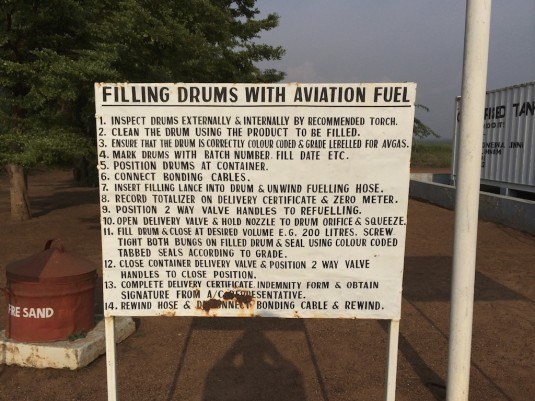
Sign at a regional small airport in Tanzania related to dealing with drums.
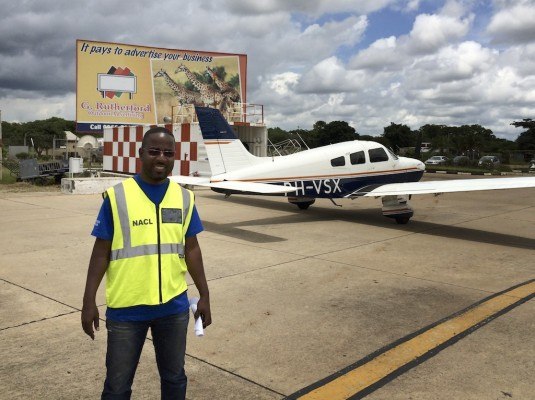
In front of the fuel pump at an airport in Zambia. The red/white blocked building in the back is a sea container containing a stationary fuel installation for AVGAS.
If you are interested in joining a guided self-fly adventure tour in Africa: https://www.africanflyingadventures.com
Overland- and Landing Clearance, Fuel or Handling Request Form
Requesting support in getting overland- and landing clearances worldwide with a specialty in arranging clearances for the African continent.
